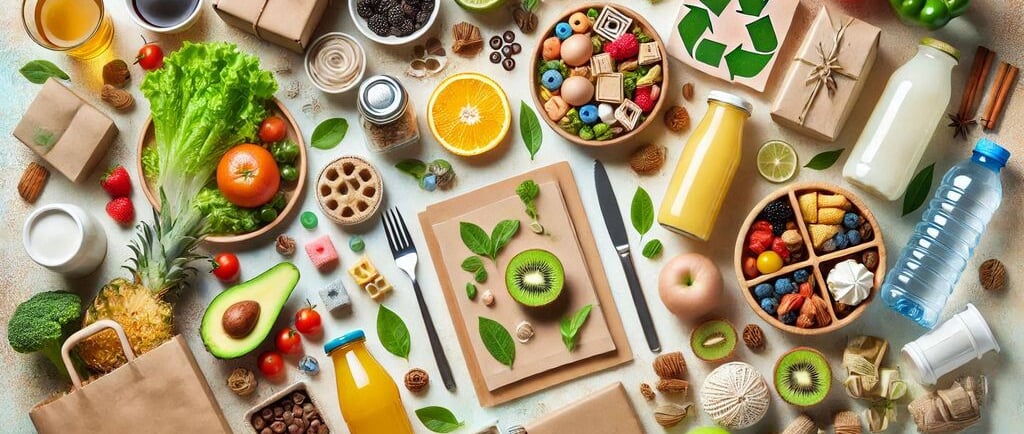Let us collaborate to foster global growth and development together.
The Rise of Sustainable Packaging Solutions: Market Trends and Consumer Preferences
Explore the rise of sustainable packaging solutions and consumer preferences in 2024. Understand key trends, benefits, and market opportunities for eco-friendly packaging.
10/31/20244 min read


Meta Description:
Explore the rise of sustainable packaging solutions and consumer preferences in 2024. Understand key trends, benefits, and market opportunities for eco-friendly packaging.
The Rise of Sustainable Packaging Solutions: Market Trends and Consumer Preferences
In today’s world, sustainability is more than just a buzzword—it's a growing priority across industries. As climate change and environmental impact become more pressing concerns, consumers are demanding change, especially when it comes to packaging. The rise of sustainable packaging solutions is a response to this demand, offering an opportunity for businesses to cater to eco-conscious consumers while reducing their environmental footprint.
In this article, we’ll explore key trends driving the adoption of sustainable packaging in 2024, examine consumer preferences, and highlight market opportunities for businesses to adopt greener packaging alternatives.
The Growing Demand for Sustainable Packaging
1. Shifting Consumer Expectations
As climate change awareness grows, consumers are becoming more conscientious about the environmental impact of their purchases, including packaging. In 2024, sustainable packaging is no longer just a “nice-to-have” feature; it is becoming a standard expectation. A significant number of consumers—especially millennials and Gen Z—are actively looking for brands that prioritize eco-friendly packaging options.
Key consumer statistics:
A survey by Nielsen found that 66% of global consumers are willing to pay more for sustainable products.
73% of young adults (ages 18-34) want companies to lead the way on environmental issues, including sustainable packaging.
These numbers reveal that businesses who align their packaging solutions with sustainability are likely to attract this growing, eco-conscious consumer base.
2. The Environmental Impact of Packaging
Packaging waste is one of the biggest environmental challenges. According to the World Economic Forum, over 400 million tons of plastic are produced each year, with nearly 40% of it designed for single-use. As consumers become more aware of the plastic problem, many are beginning to hold brands accountable for the waste their packaging creates. As a result, companies are shifting towards sustainable solutions like biodegradable, recyclable, and reusable materials.
Common sustainable packaging materials include:
Biodegradable plastics: Made from renewable sources like cornstarch or sugarcane, these plastics break down naturally over time.
Recycled content: Packaging made from post-consumer recycled materials reduces reliance on virgin resources.
Glass and aluminum: These materials are 100% recyclable, making them a great choice for eco-friendly packaging.
By making the switch, businesses can reduce waste, conserve natural resources, and boost brand loyalty among eco-minded consumers.
Key Trends in Sustainable Packaging Solutions
1. Increased Use of Plant-Based Materials
One of the standout trends in 2024 is the use of plant-based packaging solutions. This alternative to petroleum-based plastic packaging uses renewable resources like corn, wheat, or bamboo to create biodegradable and compostable options. The shift to plant-based materials helps lower the carbon footprint associated with production and disposal.
Examples of plant-based packaging:
Mushroom packaging: Used for shipping fragile products, this biodegradable packaging grows in just a few days and can be composted.
Edible packaging: Companies are experimenting with edible materials like seaweed and rice to create unique, zero-waste packaging options.
Bamboo fiber: Often used for packaging and containers, bamboo is a fast-growing, sustainable material.
As more companies begin using these innovative materials, they create new market opportunities for eco-conscious brands.
2. Minimalist Packaging Design
Consumers are increasingly favoring minimalist packaging designs. Not only does this reduce waste by using less material, but it also often leads to a cleaner, more attractive product presentation. Brands are looking for ways to reduce packaging complexity without compromising on functionality or aesthetics.
Minimalist packaging often includes:
Smaller boxes: Packaging that reduces empty space, often optimized with innovative designs and materials.
Simple labeling: Products are moving away from excessive labeling to minimalist, direct labeling that highlights eco-friendly messaging.
This trend aligns with broader shifts in consumer values, particularly the desire for products that are functional, efficient, and sustainably packaged.
3. Innovations in Packaging Reusability
Sustainable packaging isn't limited to just recyclable or biodegradable materials. More businesses are designing packaging with reusability in mind. Reusable packaging offers an eco-friendly solution that decreases the need for disposable packaging.
Examples of reusable packaging solutions include:
Glass jars and bottles: Consumers can reuse these for storing other items, helping to reduce waste.
Cloth bags: Sustainable clothing and lifestyle brands often use reusable, durable fabric bags that can be reused by consumers.
By incorporating reusable elements into packaging, brands foster a circular economy and enable consumers to participate in sustainability efforts, giving their products an extra eco-appeal.
Consumer Preferences and Business Opportunities
1. The Shift Toward Ethical Brands
Today’s consumers value transparency and ethics as much as the quality of the products they purchase. A growing number of shoppers now prioritize sustainability and ethical practices when choosing which brands to support. As businesses shift to sustainable packaging solutions, they also benefit from aligning with these values, which consumers are increasingly demanding.
Benefits of ethical packaging:
Increased brand loyalty: Consumers who feel aligned with a brand's eco-conscious mission are more likely to purchase from them again.
Positive brand reputation: Sustainability can enhance the image of a company and increase media exposure, particularly if they adopt innovative packaging solutions.
2. Regulations and Policy Influences
As governments and organizations ramp up efforts to reduce plastic waste, businesses will face more pressure to switch to sustainable packaging solutions. Regulations such as plastic bans, tax breaks for eco-friendly companies, and green packaging mandates are pushing industries towards greener alternatives.
In Europe, the European Union’s Single-Use Plastics Directive and various other global regulations are driving manufacturers to consider more sustainable packaging methods in order to remain compliant.
Conclusion
The rise of sustainable packaging solutions is reshaping industries across the globe. Consumers are increasingly drawn to brands that prioritize sustainability, with a significant shift toward eco-friendly, plant-based, and minimalist packaging options. In 2024, businesses that embrace these trends not only reduce their environmental footprint but also stand to build stronger consumer loyalty and stay ahead of the competition.
By adopting sustainable packaging solutions, companies can be part of the solution to global packaging waste while capitalizing on a growing, ethical consumer market.
Engage with Us: How has your company embraced sustainable packaging? Share your experiences or thoughts in the comments below!
Innovation
Cutting-edge solutions for industrial efficiency and productivity.
© 2024. All rights reserved.


